▼ CM Mamata Banerjee turns composer for Durga Puja! [09-29-17]
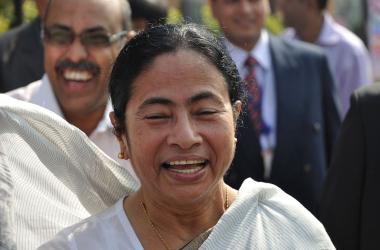 West Bengal Chief Minister Mamata Banerjee has composed the theme song for a popular city puja since theme music has become a new trend among community pujas in the metropolis.
The song - “Boichitrer muktoy gantha ekotar monihar” (the jewel of unity is stitched with a string of pearls of diversity) - is being played at the 'Suruchi Sangha' puja, winner of multiple awards.
Singer Shreya Ghosal lends her voice for the theme song that has been composed by Jeet Gannguli.
The CM has posted the video of the theme song on her official Facebook page and shared the links on her Twitter handle. West Bengal Chief Minister Mamata Banerjee has composed the theme song for a popular city puja since theme music has become a new trend among community pujas in the metropolis.
The song - “Boichitrer muktoy gantha ekotar monihar” (the jewel of unity is stitched with a string of pearls of diversity) - is being played at the 'Suruchi Sangha' puja, winner of multiple awards.
Singer Shreya Ghosal lends her voice for the theme song that has been composed by Jeet Gannguli.
The CM has posted the video of the theme song on her official Facebook page and shared the links on her Twitter handle.
|
▼ India secures rank 40 in WEF Global Competitiveness Index [09-28-17]
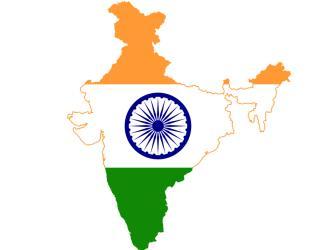 India remains the most competitive country in South Asia, appearing at No. 40 in the global competitiveness ranking of 137 countries by the World Economic Forum (WEF).
The ranking is one lower than last year’s, but the two rankings are not comparable because of a change in the methodology, WEF said.
WEF said India’s score is its highest ever according to the current methodology, which ranked Switzerland as the world’s most competitive economy.
India’s competitiveness has improved, the report said. “Among the emerging markets seen as having great potential in the early 2000s, Brazil and Turkey have now lost much of the ground they gained before 2013, but China, India and Indonesia continue to improve.”
The findings come at a time when India is looking to scale 40 spots to reach the 90th rank in 2017-18 in the World Bank’s ease of doing business survey this year.
The report, however, cautioned against risks from uncertain global economic conditions.
Ten years on from the global financial crisis, the prospects for a sustained economic recovery remain at risk due to a widespread failure on the part of leaders and policymakers to put in place reforms necessary to underpin competitiveness.
The report remained upbeat about India, which is planning massive funding to bankroll its new infrastructure programme.
India (40th) stabilizes this year after its big leap forward of the previous two years. The score improves across most pillars of competitiveness, particularly infrastructure (66th, up by two), higher education and training (75th, up by six), and technological readiness (107th, up by three), reflecting recent public investments in these areas.
The WEF lauded India’s efforts in the information and communications technology (ICT) sector.
Performance also improves in ICT indicators, particularly Internet bandwidth per user, mobile phone and broadband subscriptions, and Internet access in schools.
Internet Economy in India India remains the most competitive country in South Asia, appearing at No. 40 in the global competitiveness ranking of 137 countries by the World Economic Forum (WEF).
The ranking is one lower than last year’s, but the two rankings are not comparable because of a change in the methodology, WEF said.
WEF said India’s score is its highest ever according to the current methodology, which ranked Switzerland as the world’s most competitive economy.
India’s competitiveness has improved, the report said. “Among the emerging markets seen as having great potential in the early 2000s, Brazil and Turkey have now lost much of the ground they gained before 2013, but China, India and Indonesia continue to improve.”
The findings come at a time when India is looking to scale 40 spots to reach the 90th rank in 2017-18 in the World Bank’s ease of doing business survey this year.
The report, however, cautioned against risks from uncertain global economic conditions.
Ten years on from the global financial crisis, the prospects for a sustained economic recovery remain at risk due to a widespread failure on the part of leaders and policymakers to put in place reforms necessary to underpin competitiveness.
The report remained upbeat about India, which is planning massive funding to bankroll its new infrastructure programme.
India (40th) stabilizes this year after its big leap forward of the previous two years. The score improves across most pillars of competitiveness, particularly infrastructure (66th, up by two), higher education and training (75th, up by six), and technological readiness (107th, up by three), reflecting recent public investments in these areas.
The WEF lauded India’s efforts in the information and communications technology (ICT) sector.
Performance also improves in ICT indicators, particularly Internet bandwidth per user, mobile phone and broadband subscriptions, and Internet access in schools.
Internet Economy in India
- This in turn can provide a boost for the internet economy.
- While the total number of mobile internet users is expected to grow to almost 650 million by 2020, the number of users with high-speed internet access is expected to be around 550 million, according to The Boston Consulting Group.
Data consumption is set to expand to around 7-10GB per month per user by 2020 from the current 700MB.
- However, concerns remain on doing business.
- The private sector still considers corruption to be the most problematic factor for doing business in India
|
▼ Kandla port renamed after Deendayal Upadhyay [09-28-17]
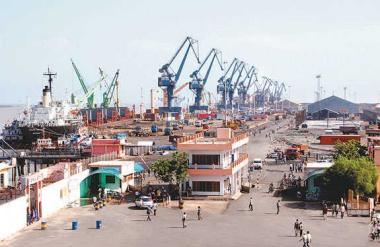 The Kandla Port, one of the top 12 major ports in the country, has been rechristened as Deendayal Port from 25th Sept 2017 in the name of Hindutva icon pandit Deendayal Upadhyay.
Kandla Port Trust is renamed as Deendayal Port Trust with effect from 25 September 2017.
The central government in exercise of powers conferred on it under Indian Ports Act, 1908 made the amendment to replace “Kandla” with “Deendayal”, as per a notification issued by the ministry of shipping.
Prime Minister Narendra Modi, earlier this year, while laying foundation stone for INR 933 crore projects at Kandla Port had suggested that it be named after pandit Deendayal Upadhyay, who stood for the uplift of all sections of the society.
Kandla Port: Know More The Kandla Port, one of the top 12 major ports in the country, has been rechristened as Deendayal Port from 25th Sept 2017 in the name of Hindutva icon pandit Deendayal Upadhyay.
Kandla Port Trust is renamed as Deendayal Port Trust with effect from 25 September 2017.
The central government in exercise of powers conferred on it under Indian Ports Act, 1908 made the amendment to replace “Kandla” with “Deendayal”, as per a notification issued by the ministry of shipping.
Prime Minister Narendra Modi, earlier this year, while laying foundation stone for INR 933 crore projects at Kandla Port had suggested that it be named after pandit Deendayal Upadhyay, who stood for the uplift of all sections of the society.
Kandla Port: Know More
- The port’s journey began in 1931 with construction of a jetty by Maharao Khengarji.
- Gradually this port in Gujarat became the number one port in India and on 31March 2016 it created history by handling 100 million tonnes cargo in a year - the first Major Port to achieve the milestone.
- Located on the Gulf of Kutch, it is one of major ports on west coast.
- It is the largest port of India by volume of cargo handled.
|
▼ First Ever India Mobile Congress 2017 held [09-27-17]
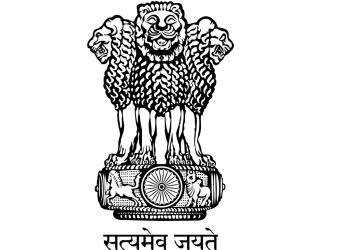 DoT’s first ever Mobile, Internet and Technology event in India - India Mobile Congress 2017, which is beginning from 27th September till 29th September 2017 at Pragati Maidan, New Delhi is a milestone.
Led by Department of Telecom as the nodal ministry, the India Mobile Congress is being organised by Cellular Operators Association of India (COAI), the industry association of mobile and telecom operators and internet companies will be a congregation to display, discuss, unveil, imbibe, educate and recognise the importance of the global and Indian telecommunications.
It also promotes mobile, internet, connectivity and digital services sector to the world.
The largest and first ever event also has the support of the other ministries like the Ministry of Electronics and Information Technology (MeitY), Skill Development and Entrepreneurship amongst others and will see participation from senior government representatives from the centres as well as various states.
This is a true example of a public- private collaboration where the government and the industry have put together a world class event in India to further the Prime Minister’s vision of a fully connected and digitally empowered India.
The Ministry has been making concerted efforts to bring affordable and universal access to all of India’s 1.32 Billion population and creating success stories in India for the world to emulate.
This is a true celebration of Digital India. DoT’s first ever Mobile, Internet and Technology event in India - India Mobile Congress 2017, which is beginning from 27th September till 29th September 2017 at Pragati Maidan, New Delhi is a milestone.
Led by Department of Telecom as the nodal ministry, the India Mobile Congress is being organised by Cellular Operators Association of India (COAI), the industry association of mobile and telecom operators and internet companies will be a congregation to display, discuss, unveil, imbibe, educate and recognise the importance of the global and Indian telecommunications.
It also promotes mobile, internet, connectivity and digital services sector to the world.
The largest and first ever event also has the support of the other ministries like the Ministry of Electronics and Information Technology (MeitY), Skill Development and Entrepreneurship amongst others and will see participation from senior government representatives from the centres as well as various states.
This is a true example of a public- private collaboration where the government and the industry have put together a world class event in India to further the Prime Minister’s vision of a fully connected and digitally empowered India.
The Ministry has been making concerted efforts to bring affordable and universal access to all of India’s 1.32 Billion population and creating success stories in India for the world to emulate.
This is a true celebration of Digital India.
|
▼ India third in the number of installed nuclear reactors, China first [09-27-17]
 India is third in the world in the number of nuclear reactors being installed, at six, while China is leading at 20, the World Nuclear Industry Status Report 2017, released this month, shows.
The number of nuclear reactor units under construction is, however, declining globally for the fourth year in a row, from 68 reactors at the end of 2013 to 53 by mid-2017, the report says.
The latest report further reveals that most nuclear reactor constructions are behind schedule, with delays resulting in increase in project costs and delay in power generation.
There are 37 reactor constructions behind schedule, of which 19 reported further delays over the past year. In India itself, five out of the six reactors under construction are behind schedule.
Eight nuclear power projects have been under construction globally for a decade or more, of which three have been so for over 30 years.
Data gathered by the authors shows that global nuclear power generation increased by 1.4% in 2016 due to a 23% increase in China, though the share of nuclear energy in electricity generation stagnated at 10.5%.
By comparison, globally, wind power output grew by 16% and solar power by 30%. Wind power increased generation by 132 TWh (terawatt hours) or 3.8 times, and solar power by 77 TWh or 2.2 times more than nuclear power’s 35 TWh respectively.
Renewables represented 62% of global power generating capacity additions.
Russia and the U.S. shut down reactors in 2016, while Sweden and South Korea both closed their oldest units in the first half of 2017, the report notes.
The report also documents the financial crisis plaguing the industry. After the discovery of massive losses over its nuclear construction projects, Toshiba filed for bankruptcy of its U.S. subsidiary Westinghouse, the largest nuclear power builder in history.
AREVA has accumulated $12.3 billion in losses over the past six years. India is third in the world in the number of nuclear reactors being installed, at six, while China is leading at 20, the World Nuclear Industry Status Report 2017, released this month, shows.
The number of nuclear reactor units under construction is, however, declining globally for the fourth year in a row, from 68 reactors at the end of 2013 to 53 by mid-2017, the report says.
The latest report further reveals that most nuclear reactor constructions are behind schedule, with delays resulting in increase in project costs and delay in power generation.
There are 37 reactor constructions behind schedule, of which 19 reported further delays over the past year. In India itself, five out of the six reactors under construction are behind schedule.
Eight nuclear power projects have been under construction globally for a decade or more, of which three have been so for over 30 years.
Data gathered by the authors shows that global nuclear power generation increased by 1.4% in 2016 due to a 23% increase in China, though the share of nuclear energy in electricity generation stagnated at 10.5%.
By comparison, globally, wind power output grew by 16% and solar power by 30%. Wind power increased generation by 132 TWh (terawatt hours) or 3.8 times, and solar power by 77 TWh or 2.2 times more than nuclear power’s 35 TWh respectively.
Renewables represented 62% of global power generating capacity additions.
Russia and the U.S. shut down reactors in 2016, while Sweden and South Korea both closed their oldest units in the first half of 2017, the report notes.
The report also documents the financial crisis plaguing the industry. After the discovery of massive losses over its nuclear construction projects, Toshiba filed for bankruptcy of its U.S. subsidiary Westinghouse, the largest nuclear power builder in history.
AREVA has accumulated $12.3 billion in losses over the past six years.
|
▼ Lost city founded by Alexander the Great discovered in Iraq! [09-27-17]
 Archaeologists have discovered a city in Iraq, that is thought to have been founded by Alexander the Great, and is 2,000 years old.
Researchers at the British Museum in London used drones to find the remains of Qalatga Darband, a fortified settlement in northern Iraq, that went unrecorded in history.
It is early days, but scientists think it would have been a bustling city on a road from Iraq to Iran.
Statues of Greco - Roman deities and terracotta roof tiles show a strong Greek influence, indicating that its early residents were Alexander’s subjects and those of his successor, researchers said. Archaeologists have discovered a city in Iraq, that is thought to have been founded by Alexander the Great, and is 2,000 years old.
Researchers at the British Museum in London used drones to find the remains of Qalatga Darband, a fortified settlement in northern Iraq, that went unrecorded in history.
It is early days, but scientists think it would have been a bustling city on a road from Iraq to Iran.
Statues of Greco - Roman deities and terracotta roof tiles show a strong Greek influence, indicating that its early residents were Alexander’s subjects and those of his successor, researchers said.
|
▼ Meet Pavitran Alokkan - India's new interceptor boat for Coast Guard [09-26-17]
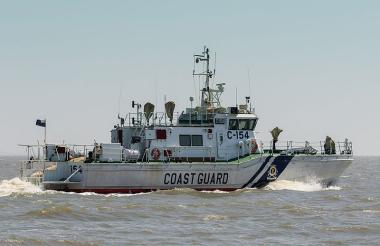 Giving a boost to coastal security, a new interceptor boat (V-409) built by Bharathi Defence and Infrastructure Limited (BDIL) was launched at a function held at the Coast Guard yard.
Launching the new interceptor boat, Pavitran Alokkan, President and Head, BDIL, Mangaluru, added the company had a live order book of various defence vessels including interceptor boats for Indian Coast Guard and auxiliary vessels for the Indian Navy.
The shipyard was committed to delivering these assets to national security and every effort was being put in to arrange funds and expedite project completion, he said at the launch yesterday.
The 28-metre long, V-409 interceptor boat has aluminium hull and fitted with new generation of Arneson Surface Drive (ASD) which is propelled by two powerful diesel engines of 1650 KW each.
The vessel has the capability of attaining very high speed in a very short duration and can operate in shallow waters.
The INR 18 crore vessel would be inducted into Coast Guard service by mid-October this year and join four other vessels delivered by the shipyard earlier, a Coast Guard release here said.
BDIL is constructing 20 vessels for Indian Coast Guard of which six had already been handed over. The remaining vessels would be handed over on the projected time. Giving a boost to coastal security, a new interceptor boat (V-409) built by Bharathi Defence and Infrastructure Limited (BDIL) was launched at a function held at the Coast Guard yard.
Launching the new interceptor boat, Pavitran Alokkan, President and Head, BDIL, Mangaluru, added the company had a live order book of various defence vessels including interceptor boats for Indian Coast Guard and auxiliary vessels for the Indian Navy.
The shipyard was committed to delivering these assets to national security and every effort was being put in to arrange funds and expedite project completion, he said at the launch yesterday.
The 28-metre long, V-409 interceptor boat has aluminium hull and fitted with new generation of Arneson Surface Drive (ASD) which is propelled by two powerful diesel engines of 1650 KW each.
The vessel has the capability of attaining very high speed in a very short duration and can operate in shallow waters.
The INR 18 crore vessel would be inducted into Coast Guard service by mid-October this year and join four other vessels delivered by the shipyard earlier, a Coast Guard release here said.
BDIL is constructing 20 vessels for Indian Coast Guard of which six had already been handed over. The remaining vessels would be handed over on the projected time.
|
▼ PENCIL portal to eliminate child labour [09-26-17]
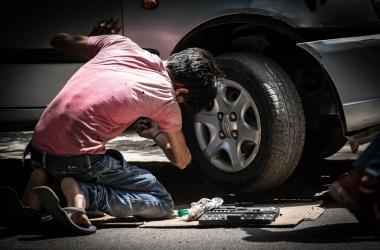 Government has enacted the Child Labour (Prohibition & Regulation) Amendment Act, 2016 which came into force with effect from 1st September, 2016.
With this amendment, employment of a child below 14 years is completely prohibited in any occupation or processes.
Government has taken several initiatives subsequent to the enactment of the Child Labour (Prohibition and Regulation) Amendment Act, 2016 to strengthen the governance of the legislative provisions.
This include Framing of State Action Plan and circulating to all States/ UTs for enforcement of the Amended Act, Framing of Child Labour (Prohibition and Regulation) Amendment Central Rules subsequent to the Amendment in the Act (notified vide notification dated 02.06.2017) and Review of the Schedule of hazardous occupations and processes by Technical Advisory Committee.
The genesis of the PENCIL portal is in the felt need to create a robust implementing and monitoring mechanism for both enforcement of the legislative provisions and effective implementation of the NCLP especially in the backdrop that the subject of Labour is in the concurrent list and enforcement to a large extent depends of respective State Governments.
It was felt that an online portal which connects Central Government to State Government, District and to all Project Societies would provide a mechanism for implementation.
In this backdrop the online portal PENCIL was conceptualized. PENCIL Portal has following components:
a. Child Tracking System
b. Complaint Corner
c. State Government
d. National Child Labour Project
e. Convergence
PENCIL: Know More Government has enacted the Child Labour (Prohibition & Regulation) Amendment Act, 2016 which came into force with effect from 1st September, 2016.
With this amendment, employment of a child below 14 years is completely prohibited in any occupation or processes.
Government has taken several initiatives subsequent to the enactment of the Child Labour (Prohibition and Regulation) Amendment Act, 2016 to strengthen the governance of the legislative provisions.
This include Framing of State Action Plan and circulating to all States/ UTs for enforcement of the Amended Act, Framing of Child Labour (Prohibition and Regulation) Amendment Central Rules subsequent to the Amendment in the Act (notified vide notification dated 02.06.2017) and Review of the Schedule of hazardous occupations and processes by Technical Advisory Committee.
The genesis of the PENCIL portal is in the felt need to create a robust implementing and monitoring mechanism for both enforcement of the legislative provisions and effective implementation of the NCLP especially in the backdrop that the subject of Labour is in the concurrent list and enforcement to a large extent depends of respective State Governments.
It was felt that an online portal which connects Central Government to State Government, District and to all Project Societies would provide a mechanism for implementation.
In this backdrop the online portal PENCIL was conceptualized. PENCIL Portal has following components:
a. Child Tracking System
b. Complaint Corner
c. State Government
d. National Child Labour Project
e. Convergence
PENCIL: Know More
- “PENCIL”: an electronic platform for effective enforcement for no child labour developed by Ministry of Labour and Employment is going to be launched by Home Minister Shri Rajnath Singhji on 26th September 2017 in the National Conference on Child Labour at Pravasi Bhartiya Kendra, Chanakya Puri, New Delhi.
- The Conference is being attended by State Labour Ministers and Labour Secretaries of the State, Secretaries of Central Ministries, District Nodal Officers as well as the Project Directors for National Child Labour Project (NCLP).
- Nobel Laureate Shri Kailash Satyarthi will be the guest of honour while the Labour and Employment Minister, Shri Santosh Kumar Gangwar will preside over the conference.
The conference will have a detailed technical session.
NCLP: Know More- The National Child Labour Project (NCLP) Scheme initiated in the in 1988 to rehabilitate working children by eliminating all forms of child labour through identification and withdrawal of all children in the Project Area from child labour,
- Preparing children withdrawn from work for mainstream education along with vocational training. NCLP has been revised expanded and aligned to the new legislative provisions.
- The legislative changes have been accompanied by creation of additional institutional mechanisms at the district, state and national level for identification and rescue, along with revamping the rehabilitation scheme and a centralized database for case to case monitoring and accountability.
- The Standard Operating Procedure (SoP) is aimed at creating a ready reckoner for trainers, practitioners and monitoring agencies to ensure complete prohibition of child labour and protection of adolescents from hazardous labour ultimately leading to Child Labour Free India.
|
▼ Even brainless jellyfish need their sleep! [09-25-17]
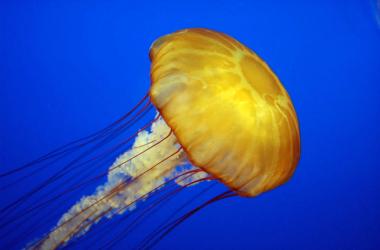 Sleep is a fundamental part of life for many organisms on Earth, and new research suggests that even jellyfish require a few Z's - a discovery that sheds light on just how old and widespread the practice of sleeping must be.
In a study, Caltech researchers recorded the first example of a organism that enters a sleep-like state that has a “nerve net” - a simple nervous system - and no centralized brain.
There's a lot still unknown about the reasons and mechanics behind sleep, but scientists largely agree that it's a complex process that somehow involves memory.
Cassiopeia are commonly referred to as upside-down jellyfish because they rest on the bottoms of their containers with their tentacles floating upward into the air - opposite to the position most floating jellyfish assume.
The researchers observed how, when the lights were turned off in the room holding the jellyfish's habitats, the creatures appeared to “pulse” less frequently, and would stay still for long periods of time in some form of sleep-like extended rest.
To test if this was actually “sleep,” the scientists studied a group of 23 upside-down jellyfish using a three-pronged approach over the course of a week.
They were able to show that the jellyfish could be “awoken” from their slumber by poking them and feeding them in the middle of the night.
And when the creatures appear to be sleeping they reacted less quickly to being moved or overturned than when they were awake.
Most intriguingly, just like you need a certain amount of shut eye, the researchers found the jellyfish also need their rest. When the upside-down jellyfish were kept in containers that had water pulsed through them three times an hour to disrupt their peace and quiet, they reacted the next day.
They were 17 percent less active than normal in this sleep-deprived state.
Other relatively simple and brainless animals sleep too, such as worms.
But jellyfish are the most ancient creatures on the evolutionary tree that we know requires its sleepy time.
Jellyfish split off the evolutionary tree from the ancestors of most other living creatures hundreds of millions of years ago.
This means that sleep could be a very, very old behaviour at the root of nearly all animals, and not something that evolved later in more advanced organisms.
This insight could help researchers dig more into the “paradox of sleep”. Sleep is a fundamental part of life for many organisms on Earth, and new research suggests that even jellyfish require a few Z's - a discovery that sheds light on just how old and widespread the practice of sleeping must be.
In a study, Caltech researchers recorded the first example of a organism that enters a sleep-like state that has a “nerve net” - a simple nervous system - and no centralized brain.
There's a lot still unknown about the reasons and mechanics behind sleep, but scientists largely agree that it's a complex process that somehow involves memory.
Cassiopeia are commonly referred to as upside-down jellyfish because they rest on the bottoms of their containers with their tentacles floating upward into the air - opposite to the position most floating jellyfish assume.
The researchers observed how, when the lights were turned off in the room holding the jellyfish's habitats, the creatures appeared to “pulse” less frequently, and would stay still for long periods of time in some form of sleep-like extended rest.
To test if this was actually “sleep,” the scientists studied a group of 23 upside-down jellyfish using a three-pronged approach over the course of a week.
They were able to show that the jellyfish could be “awoken” from their slumber by poking them and feeding them in the middle of the night.
And when the creatures appear to be sleeping they reacted less quickly to being moved or overturned than when they were awake.
Most intriguingly, just like you need a certain amount of shut eye, the researchers found the jellyfish also need their rest. When the upside-down jellyfish were kept in containers that had water pulsed through them three times an hour to disrupt their peace and quiet, they reacted the next day.
They were 17 percent less active than normal in this sleep-deprived state.
Other relatively simple and brainless animals sleep too, such as worms.
But jellyfish are the most ancient creatures on the evolutionary tree that we know requires its sleepy time.
Jellyfish split off the evolutionary tree from the ancestors of most other living creatures hundreds of millions of years ago.
This means that sleep could be a very, very old behaviour at the root of nearly all animals, and not something that evolved later in more advanced organisms.
This insight could help researchers dig more into the “paradox of sleep”.
|
▼ Pralay Sahayam: Multi agency effort to tackle urban flooding [09-25-17]
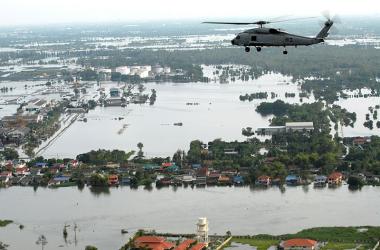 A multi-agency exercise was conducted on the banks of Hussain Sagar Lake as the final event of ‘Pralay Sahayam’ in Hyderabad.
The event demonstrated efforts of all central and state agencies, National Disaster Relief Force (NDRF) and the Armed Forces towards jointly tackling an urban flooding scenario in Hyderabad.
For the purpose of the exercise, Hussain Sagar Lake was transformed into urban colonies partly submerged under water, post heavy showers in the city.
A large number of dummy structures depicting multi-storied buildings and houses with stranded people, power stations, educational institutes etc., were erected in the lake in an inundated condition.
The hapless stranded occupants of these dwellings were rescued in joint operations carried out by the State Government agencies, Police, State Fire & Emergency Services, NDRF, CISF and the Armed Forces.
The exercise brought out the role and function of the State Emergency Operations in coordinating conduct of the joint operations.
Further the significance of early warning systems of agencies like Indian Meteorological Department (IMD), National Remote Sensing Centre (NRSC) and Indian National Centre for Ocean Information Services (INCOIS) was emphasised.
The exercise culminated with a static display which demonstrated the efficient and functional layout of a relief and rehabilitation camp for the displaced persons.
The camp catered for emergency medical assistance and other essential services for the needy. Indian vendors showcased state-of-the-art disaster management equipment and related wares.
NGOs such as Plan India, Care India, Sphere India, etc., also participated, bringing out their capabilities, organization and operational strategies. A multi-agency exercise was conducted on the banks of Hussain Sagar Lake as the final event of ‘Pralay Sahayam’ in Hyderabad.
The event demonstrated efforts of all central and state agencies, National Disaster Relief Force (NDRF) and the Armed Forces towards jointly tackling an urban flooding scenario in Hyderabad.
For the purpose of the exercise, Hussain Sagar Lake was transformed into urban colonies partly submerged under water, post heavy showers in the city.
A large number of dummy structures depicting multi-storied buildings and houses with stranded people, power stations, educational institutes etc., were erected in the lake in an inundated condition.
The hapless stranded occupants of these dwellings were rescued in joint operations carried out by the State Government agencies, Police, State Fire & Emergency Services, NDRF, CISF and the Armed Forces.
The exercise brought out the role and function of the State Emergency Operations in coordinating conduct of the joint operations.
Further the significance of early warning systems of agencies like Indian Meteorological Department (IMD), National Remote Sensing Centre (NRSC) and Indian National Centre for Ocean Information Services (INCOIS) was emphasised.
The exercise culminated with a static display which demonstrated the efficient and functional layout of a relief and rehabilitation camp for the displaced persons.
The camp catered for emergency medical assistance and other essential services for the needy. Indian vendors showcased state-of-the-art disaster management equipment and related wares.
NGOs such as Plan India, Care India, Sphere India, etc., also participated, bringing out their capabilities, organization and operational strategies.
|
▼ Intelligent transportation systems: Cooperation between NITI Aayog and IRF Geneva [09-22-17]
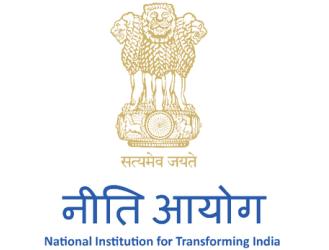 The National Institution for Transforming India (NITI Aayog) and the International Road Federation, Geneva (IRF Geneva) have on 21st Sept 2017 signed a Statement of Intent (SoI) to cooperate in the field of Intelligent Transportation Systems (ITS).
The objective of the SoI is to create a national platform, involving all relevant Government of India stakeholders, Indian and foreign companies active in the sector, and relevant technical experts for the purpose of developing a National ITS Policy covering:
1) Traffic Management,
2) Parking Management,
3) Electronic Enforcement of Traffic Rules and Regulations,
4) Fleet Management and Monitoring,
5) Innovation in the field of ITS, and
6) Education in the field of ITS.
Objectives of National ITS Policy The National Institution for Transforming India (NITI Aayog) and the International Road Federation, Geneva (IRF Geneva) have on 21st Sept 2017 signed a Statement of Intent (SoI) to cooperate in the field of Intelligent Transportation Systems (ITS).
The objective of the SoI is to create a national platform, involving all relevant Government of India stakeholders, Indian and foreign companies active in the sector, and relevant technical experts for the purpose of developing a National ITS Policy covering:
1) Traffic Management,
2) Parking Management,
3) Electronic Enforcement of Traffic Rules and Regulations,
4) Fleet Management and Monitoring,
5) Innovation in the field of ITS, and
6) Education in the field of ITS.
Objectives of National ITS Policy
- The objectives of this national ITS Policy will be to contribute to reducing urban traffic congestion, improving the situation around parking of vehicles in cities, improving road safety, and improving the security of passenger and goods traffic.
- The work of this National Platform will provide a coherent and consistent National ITS Policy covering domains such as traffic and parking management, enforcement, and security.
|
▼ Walk Free Foundation released Global Estimates of Modern Slavery with ILO [09-22-17]
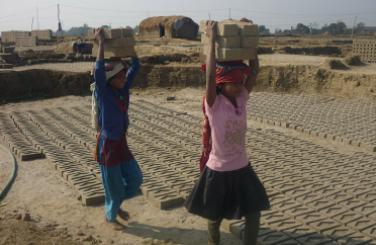 As per the 2017 Global Estimates of modern slavery released by the International Labour Organisation (ILO) and the Walk Free Foundation (WFF) on 20th Sept, an estimated 40.3 million people were victims of slavery worldwide.
Women accounted for 71% (29 million), while children constituted 25% (10 million) of modern slaves.
Of the 40.3 million trapped in slavery, 25 million were in forced labour and 15 million in forced marriage.
Of the 25 million, 16 million were exploited by the private sector, 4.8 million were in forced sexual exploitation, and 4.1 million were in forced labour imposed by state authorities.
Debt bondage was responsible for 50% of all forced labour in the private sector.
This proportion rose to 70% for adults forced to work in agriculture, domestic work, or manufacturing.
More women (9.2 million, or 57.6%) than men (6.8 million, or 42.4%) were affected by privately imposed forced labour.
The largest share of adults who were in forced labour were domestic workers (24%), followed by the construction sector (18%), manufacturing (15%), and agriculture and fishing (11%).
Women and Children in Slavery: Know More As per the 2017 Global Estimates of modern slavery released by the International Labour Organisation (ILO) and the Walk Free Foundation (WFF) on 20th Sept, an estimated 40.3 million people were victims of slavery worldwide.
Women accounted for 71% (29 million), while children constituted 25% (10 million) of modern slaves.
Of the 40.3 million trapped in slavery, 25 million were in forced labour and 15 million in forced marriage.
Of the 25 million, 16 million were exploited by the private sector, 4.8 million were in forced sexual exploitation, and 4.1 million were in forced labour imposed by state authorities.
Debt bondage was responsible for 50% of all forced labour in the private sector.
This proportion rose to 70% for adults forced to work in agriculture, domestic work, or manufacturing.
More women (9.2 million, or 57.6%) than men (6.8 million, or 42.4%) were affected by privately imposed forced labour.
The largest share of adults who were in forced labour were domestic workers (24%), followed by the construction sector (18%), manufacturing (15%), and agriculture and fishing (11%).
Women and Children in Slavery: Know More
- Women represented 99% of the victims of forced labour in the commercial sex industry, and 84% of the victims of forced marriages.
- As per the Global Slavery Index 2016, India had the world’s largest number of modern slaves, at 18.3 million, with 1.4% of the population living in slavery-like conditions.
- Also, 151.6 million children aged 5 to 17 were engaged in child labour in 2016. Nearly 50% (72.5 million) were involved in hazardous work.
- While 70.9% of child labour was concentrated in agriculture, 11.9% worked in industry.
- The highest number (72.1 million) was in Africa, followed by Asia and the Pacific (62 million).
Global Estimates: Modern Slavery- Modern slavery was most prevalent in Africa (7.6 per 1,000 people), followed by Asia and the Pacific (6.1 per 1,000) and then Europe and Central Asia (3.9 per 1,000).
- Forced labour was most prevalent in Asia and the Pacific (4 per 1,000 people), followed by Europe and Central Asia (3.6 per 1,000), and then Africa (2,8 per 1,000).
- The latest figures are expected to aid in policy-making aimed at achieving Target 8.7 of the Sustainable Development Goals (SDGs), which calls for effective measures to end forced labour, modern slavery, human trafficking, and child labour in all its forms.
- The world won’t be in a position to achieve the SDGs unless we dramatically increase our efforts to fight these scourges.
- The new global estimates can help shape and develop interventions to prevent both forced labour and child labour.
- According to the ILO-WFF report, the term ‘modern slavery’ covers “a set of specific legal concepts including forced labour, debt bondage, forced marriage, other slavery and slavery-like practices, and human trafficking.” Though not defined in law, “essentially, it refers to situations of exploitation that a person cannot refuse or leave because of threats, violence, coercion, deception, and/or abuse of power.”
|
▼ 50 nations sign nuclear weapons treaty ban [09-22-17]
 Fifty countries on 20th Sept 2017 signed a treaty to ban nuclear weapons, a pact that the world’s nuclear powers spurned but supporters hailed as a historic agreement nonetheless.
Before the day was out, 50 states as different as Indonesia and Ireland had put their names to the treaty; others can sign later if they like.
Guyana, Thailand and the Vatican also have already ratified the treaty, which needs 50 ratifications to take effect among the nations that back it.
They would be barred from developing, testing, producing, manufacturing, otherwise acquiring, possessing or stockpiling nuclear weapons “under any circumstances.”
Seven decades after the United States dropped two atomic bombs on Japan during World War II the only use of nuclear weapons there are believed to be about 15,000 of them in the world today.
Amid rising tensions over North Korea’s nuclear and missile tests, U.N. Secretary - General Antonio Guterres said that the threat of a nuclear attack is at its highest level since the end of the Cold War.
Supporters of the pact say it’s time to push harder toward eliminating atomic weapons than nations have done through the nearly 50-year-old Nuclear Non-Proliferation Treaty.
Terms of the Treaty Fifty countries on 20th Sept 2017 signed a treaty to ban nuclear weapons, a pact that the world’s nuclear powers spurned but supporters hailed as a historic agreement nonetheless.
Before the day was out, 50 states as different as Indonesia and Ireland had put their names to the treaty; others can sign later if they like.
Guyana, Thailand and the Vatican also have already ratified the treaty, which needs 50 ratifications to take effect among the nations that back it.
They would be barred from developing, testing, producing, manufacturing, otherwise acquiring, possessing or stockpiling nuclear weapons “under any circumstances.”
Seven decades after the United States dropped two atomic bombs on Japan during World War II the only use of nuclear weapons there are believed to be about 15,000 of them in the world today.
Amid rising tensions over North Korea’s nuclear and missile tests, U.N. Secretary - General Antonio Guterres said that the threat of a nuclear attack is at its highest level since the end of the Cold War.
Supporters of the pact say it’s time to push harder toward eliminating atomic weapons than nations have done through the nearly 50-year-old Nuclear Non-Proliferation Treaty.
Terms of the Treaty
- Under its terms, non-nuclear nations agreed not to pursue nukes in exchange for a commitment by the five original nuclear powers the U.S., Russia, Britain, France and China to move toward nuclear disarmament and to guarantee other states’ access to peaceful nuclear technology for producing energy.
- More than 120 countries approved the new nuclear weapons ban treaty in July over opposition from nuclear - armed countries and their allies, who boycotted negotiations.
- The U.S., Britain and France said the prohibition wouldn’t work and would end up disarming their nations while emboldening “bad actors,”.
- Brazil was the first country to sign onto the ban, followed by nations from Algeria to Venezuela.
|
▼ First ever radio jingle for National SC ST Hub released [09-21-17]
 The Vice President, Shri Venkaiah Naidu was the Chief Guest of National SC ST Hub (NSSH) Confluence organized by Ministry of Micro, Small and Medium Enterprises (MSME) and also released first ever radio jingle for National SC ST Hub.
A collective, coordinated action is needed to strengthen the eco-system for promoting SC & ST Entrepreneurs in the country.
Capacity building is important; credit availability is important, technology up-gradation is also important, he added.
Micro, Small and Medium Enterprise Sector (MSME) is the bulwark of the Indian economy and one of the largest employers after agriculture. He further said that it is also one of the major contributors to the country’s GDP.
With Make in India envisaging to push contribution of the manufacturing sector to 25 per cent of the GDP by 2022, the MSME sector will be required to play a critical role in achieving the goal, he added.
Skill up gradation is one area that requires top attention for the overall development of SC/ST entrepreneurs.
National SC/ST Hub was lauded for signing MoUs with Sector Skill Councils to skill over 2,000 entrepreneurs, as these associations and incubators have a huge role to play in supporting the objectives of National SC/ST Hub.
Each association must extend support in building capacities and mentoring entrepreneurs in its respective sector.
National SC ST Confluence: Know More The Vice President, Shri Venkaiah Naidu was the Chief Guest of National SC ST Hub (NSSH) Confluence organized by Ministry of Micro, Small and Medium Enterprises (MSME) and also released first ever radio jingle for National SC ST Hub.
A collective, coordinated action is needed to strengthen the eco-system for promoting SC & ST Entrepreneurs in the country.
Capacity building is important; credit availability is important, technology up-gradation is also important, he added.
Micro, Small and Medium Enterprise Sector (MSME) is the bulwark of the Indian economy and one of the largest employers after agriculture. He further said that it is also one of the major contributors to the country’s GDP.
With Make in India envisaging to push contribution of the manufacturing sector to 25 per cent of the GDP by 2022, the MSME sector will be required to play a critical role in achieving the goal, he added.
Skill up gradation is one area that requires top attention for the overall development of SC/ST entrepreneurs.
National SC/ST Hub was lauded for signing MoUs with Sector Skill Councils to skill over 2,000 entrepreneurs, as these associations and incubators have a huge role to play in supporting the objectives of National SC/ST Hub.
Each association must extend support in building capacities and mentoring entrepreneurs in its respective sector.
National SC ST Confluence: Know More
- The confluence brought various insights from Industry Association and Incubators to understand the gaps in realizing the mandate of Public Procurement Policy.
- It put forth innovative strategies for holistic development of MSEs owned by SC/ST Entrepreneurs.
The discussion held was extremely fruitful and intend to go a long way in meeting the objectives of the National SC ST Hub.
- Interactive session was held with over 150 industry associations and incubators with representation of over 400 participants, focussing on collaboration with NSSH, to augment the capabilities of existing SC/ST entrepreneurs.
- Several excellent suggestions were made with respect to market access; capacity building, tender challenges, technology upgradation, etc. were made.
- The session also focused on future action plan along with role to be played by each stakeholder to achieve the objectives of the hub.
- In addition, MOUs were signed with 3 Sector Skill Councils to provide skill development trainings of SC-ST Entrepreneurs under capacity building initiatives of NSSH.
Background:- The Government of India formulated the Public Procurement Policy, 2012 which states that 20% of total procurement of goods and services by Central Ministries, Departments and CPSEs shall be made from MSEs and 20% of such procurement (4% of total) shall be from SC & ST owned MSEs.
- NSSH is a unique initiative launched by Prime Minister Shri Narendra Modi on 18th October 2016. This initiative is aimed empowering SC ST owned MSEs in order to achieve the 4% mandate of the Public Procurement Policy.
- In view of the above, the NSSH initiative has the potential to work on ground and have an impact till the last mile. Due to the social and economic bearing the programme can have, it requires a strategy that delivers sustained and measurable impact, on the entire MSME ecosystem.
- Therefore, there have been continual efforts to include all relevant stakeholders including state, industry associations, incubators, CPSEs to identify synergies and work collaboratively and cohesively towards a shared goal.
Milestones in the Hub
Some of the milestones achieved by the hub are as follows -
1. Data analysis completed for 5 lakh SC/ST units to identify suppliers to CPSEs
2. Physical verification of over 4,900 SC/ST entrepreneurs completed that had potential to supply to CPSEs
3. Telephonic interaction with over 2,590 SC/ST MSMEs completed to understand challenges in securing PSUs’ tenders
4. Information of 1,003 SC/ST enterprises mapped with 42 CPSEs for vendor empanelment and procurement
5. Appointment of nodal officers in 67 CPSEs. Discussion with over 60 CPSEs conducted
6. Special Marketing Assistance Scheme - 950 units participated in domestic and international fairs/exhibition
7. 2,107 units facilitated with CPSE linkages under Special Vendor Development Programme
8. 512 SC/ST units benefitted under Special Performance & Credit Rating Scheme
9. Training programme conducted in IIM Noida (Satellite institute of IIM Lucknow), IIM Lucknow, IIM Raipur, IIM Kolkata and XLRI Jamshedpur (on pilot basis) for SC/ST entrepreneurs for over 100 SC/ST entrepreneurs.
|
▼ SSB acquires new intelligence set up [09-19-17]
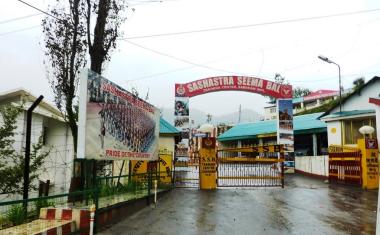 Union Home Minister Shri Rajnath Singh operationalised the New Intelligence Set-up of the Sashastra Seema Bal (SSB) at a function on 18th Sept 2017.
This marked the culmination of a long pending aspiration of the Force following approval of the Union Home Minister.
SSB has been declared as the Lead Intelligence Agency (LIA) for both the Indo-Nepal and Indo-Bhutan borders.
Thus, it was felt that a well knit intelligence network of the highest capabilities that can function and deliver would be the prime requirement of comprehensive Border Management.
This was quite essential as the operations of SSB have to be Intelligence based so as to prevent criminals and smugglers from taking advantage of the friendly borders with Nepal and Bhutan.
MHA has accordingly sanctioned 650 posts in various ranks from Battalion to Frontier Headquarters.
The job of SSB is much more demanding and challenging since it is vested the responsibility of guarding open borders unlike other borders.
This makes the task much more challenging and demands highest alertness to check illegal activities like smuggling of arms, Fake Indian Currency Notes (FICN), drugs and human-trafficking.
Smt. Archana Ramasundaram is the first woman to head any CAPF.
WARB: Know More Union Home Minister Shri Rajnath Singh operationalised the New Intelligence Set-up of the Sashastra Seema Bal (SSB) at a function on 18th Sept 2017.
This marked the culmination of a long pending aspiration of the Force following approval of the Union Home Minister.
SSB has been declared as the Lead Intelligence Agency (LIA) for both the Indo-Nepal and Indo-Bhutan borders.
Thus, it was felt that a well knit intelligence network of the highest capabilities that can function and deliver would be the prime requirement of comprehensive Border Management.
This was quite essential as the operations of SSB have to be Intelligence based so as to prevent criminals and smugglers from taking advantage of the friendly borders with Nepal and Bhutan.
MHA has accordingly sanctioned 650 posts in various ranks from Battalion to Frontier Headquarters.
The job of SSB is much more demanding and challenging since it is vested the responsibility of guarding open borders unlike other borders.
This makes the task much more challenging and demands highest alertness to check illegal activities like smuggling of arms, Fake Indian Currency Notes (FICN), drugs and human-trafficking.
Smt. Archana Ramasundaram is the first woman to head any CAPF.
WARB: Know More
- On the occasion, the Union Home Minister launched the Welfare and Rehabilitation Board (WARB) Mobile App for CAPF personnel.
- The App is available on Google Play store and is user friendly.
- It contains various useful features to facilitate retired CAPFs and Assam Rifles personnel to get their genuine grievances redressed, seek skill development training through National Skill Development Corporation under “Pradhan Mantri Kaushal Vikas Yojana, re-employment and other relevant and important information.
- This mobile App shall also help retired personnel to have better co-ordination with WARB and its field formation at states/UTs and district level.
- Later Shri Rajnath Singh released the book “Pride of India”, a compilation on SSB martyrs and awardees. He also distributed scholarships to children of SSB martyrs.
- SSB Wives’ Welfare Association “SANDIKSHA” is providing financial help to children of martyrs who are still studying in school, colleges and universities to continue their studies.
- The Force has undertaken Modernization programme and the SSB has acquired two UAVs while the MHA has approved three Bomb Detection and Disposal squads for the SSB, she added.
|
▼ Meet India's first indigenously built BVRAAM missile, Astra [09-18-17]
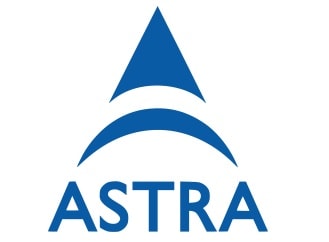 The indigenously developed Beyond Visual Range Air-to-Air Missile (BVRAAM) — Astra — underwent a series of successful trials+ for four days over the Bay of Bengal, marking completion of its development phase.
The final development flight trials of Astra BVRAAM were successfully conducted over the Bay of Bengal, off the coast of Chandipur in Odisha during September 11-14.
A total of seven trials were conducted against pilotless target aircraft successfully.
The successful trial of the Beyond Visual Range Air to Air Missile (BVRAAM) paves way for its induction into the Indian Air Force (IAF).
The missile system has been developed by the Defence Research and Development Organisation (DRDO) in cooperation with the IAF.
A number of Defence Public Sector Undertakings (DPSUs) and more than 50 public and private industries have contributed in developing the weapon system.
Final rounds of trials were successfully conducted by Sukhoi-30 MKI by IAF over the Bay of Bengal. Seven missiles were fired altogether against Pilotless Target Aircraft (PTA) during the last four days.
Defence sources said the missile was fired at a very long range and different altitudes.
It successfully engaged high manoeuvriKarnam Malleshwari. The indigenously developed Beyond Visual Range Air-to-Air Missile (BVRAAM) — Astra — underwent a series of successful trials+ for four days over the Bay of Bengal, marking completion of its development phase.
The final development flight trials of Astra BVRAAM were successfully conducted over the Bay of Bengal, off the coast of Chandipur in Odisha during September 11-14.
A total of seven trials were conducted against pilotless target aircraft successfully.
The successful trial of the Beyond Visual Range Air to Air Missile (BVRAAM) paves way for its induction into the Indian Air Force (IAF).
The missile system has been developed by the Defence Research and Development Organisation (DRDO) in cooperation with the IAF.
A number of Defence Public Sector Undertakings (DPSUs) and more than 50 public and private industries have contributed in developing the weapon system.
Final rounds of trials were successfully conducted by Sukhoi-30 MKI by IAF over the Bay of Bengal. Seven missiles were fired altogether against Pilotless Target Aircraft (PTA) during the last four days.
Defence sources said the missile was fired at a very long range and different altitudes.
It successfully engaged high manoeuvriKarnam Malleshwari.
|
▼ Indigenous artillery gun ATAGS sets new world record [09-18-17]
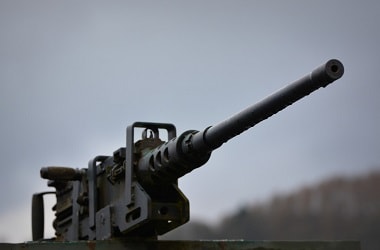 An indigenous artillery gun, Advanced Towed Artillery Gun System (ATAGS), being jointly developed by the Defence Research and Development Organisation (DRDO) and the private sector has set a new world record in range by hitting targets at a distance of 48 km.
During trial firings at Pokhran ranges last week, ATAGS registered the longest ever distance of 48.074 kms, surpassing the maximum ranges of 35-40 kms fired by any artillery gun system in this category.
ATAGS is a 155mm, 52 calibre towed artillery gun being developed in mission mode by DRDO as a part of the Army’s artillery modernisation programme.
The record was achieved with special ammunition, “high explosive – base bleed” (HE – BB) by the ATAGS variant developed by Kalyani Group.
The development is being done through a consortium based model, similar to that adopted for the Pinaka multi-barrel rocket launch system.
It was designed by DRDO’s Armament Research and Development Establishment (ARDE) in Pune. In addition, Bharat Forge Limited of Kalyani Group, Tata Power Strategic Engineering Division and Mahindra Defence Naval System from the private sector are involved in a big way along with the Ordnance Factory Board (OFB).
For instance, the barrel and breech mechanism, on both variants of ATAGS, was developed at Kalyani Group.
ATAGS Gun: Know More An indigenous artillery gun, Advanced Towed Artillery Gun System (ATAGS), being jointly developed by the Defence Research and Development Organisation (DRDO) and the private sector has set a new world record in range by hitting targets at a distance of 48 km.
During trial firings at Pokhran ranges last week, ATAGS registered the longest ever distance of 48.074 kms, surpassing the maximum ranges of 35-40 kms fired by any artillery gun system in this category.
ATAGS is a 155mm, 52 calibre towed artillery gun being developed in mission mode by DRDO as a part of the Army’s artillery modernisation programme.
The record was achieved with special ammunition, “high explosive – base bleed” (HE – BB) by the ATAGS variant developed by Kalyani Group.
The development is being done through a consortium based model, similar to that adopted for the Pinaka multi-barrel rocket launch system.
It was designed by DRDO’s Armament Research and Development Establishment (ARDE) in Pune. In addition, Bharat Forge Limited of Kalyani Group, Tata Power Strategic Engineering Division and Mahindra Defence Naval System from the private sector are involved in a big way along with the Ordnance Factory Board (OFB).
For instance, the barrel and breech mechanism, on both variants of ATAGS, was developed at Kalyani Group.
ATAGS Gun: Know More
- The gun has several significant features including an all-electric drive, high mobility, quick deployability, auxiliary power mode, advanced communication system, automated command and control system.
- It has a six round magazine instead of a standard three round magazine.
- Also, the gun weighs slightly more than normal due to the larger chamber.
- The Army has not inducted any new artillery gun since the Bofors in the 1980's.
- After decades of failed attempts, the service is gearing up to induct the Dhanush artillery gun which is an indigenously upgraded variant of the Bofors gun.
- In addition, last November India signed a contract for 145 M-777 Ultra-Light Howitzers from the US.
|
▼ Humanitarian assistance to Rohingya Muslims [09-15-17]
A humanitarian crisis arose in Bangladesh due to heavy influx of refugees from neighbouring Myanmar.
The government of India has decided to assist Bangladesh in this crisis by sending relief material.
The Indian Air Force was tasked to airlift the relief material from India to Bangladesh.
One C-17 Globemaster strategic heavy lift cargo aircraft was positioned at short notice at Delhi on 13 Sep 17 to airlift 55 Tons of relief material to Chittagong, Bangladesh.
This aircraft was loaded overnight with relief material consisting of critical daily necessities.
The C-17 carrying relief material departed early morning on 14 Sep 17 and routed via Kolkata to pick up additional load.
The material was delivered at Chittagong, Bangladesh at 1245 hours on 14 Sep 17.
One more C-17 is scheduled to airlift additional relief material to Bangladesh.
The Indian Air Force rose to the challenge and played a pivotal role to further strengthen the close ties of friendship between India and Bangladesh.
|
▼ Complete list of Indo-Belarus agreements signed in Sept 2017 [09-13-17]
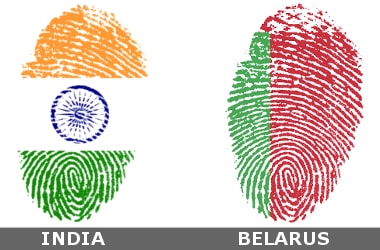 List of MoUs/Agreements signed during State visit of President of Belarus to India List of MoUs/Agreements signed during State visit of President of Belarus to India
| S.No. | Name of the MOU/Agreement/Treaty |
|---|
| 1 | Memorandum of Understanding between the Ministry of Youth Affairs and Sports of the Republic of India and the Ministry of Education of the Republic of Belarus | | 2 | Memorandum of Understanding between the Ministry of Skill Development and Entrepreneurship of the Government of the Republic of India and the Ministry of Education of the Government of the Republic of Belarus for Cooperation in the Field of Vocational Education and Training | | 3 | Agreement on Scientific and Technical Cooperation between Indian National Science Academy (INSA) and the National Academy of Sciences of Belarus | | 4 | MoU between Indian Council of Agricultural Research, New Delhi, India and Belarusian State Agricultural Academy, Gorki, Belarus for Cooperation in Agricultural Research and Education | | 5 | Protocol amending the Agreement between the Ministry of Agriculture & Farmer’s Welfare of the Republic of India and the Ministry of Agriculture and Food of the Republic of Belarus signed on April 16, 2007 | | 6 | Programme of cooperation between the Government of Republic of India and the Government of Republic of Belarus in the field of culture for 2018-2020 | | 7 | MoU between M/o Petroleum & Natural Gas of the Republic of India and Belarusian State Concern of Oil and Chemistry in the Oil and Gas Sector | | 8 | Memorandum of Understanding between JSV "Belzarubezhstroy” and National Buildings Construction Corporation Ltd. | | 9 | Memorandum of Understanding between JSC Belarusian Potash Company (BPC) and Indian Potash Ltd (IPL) | | 10 | Agreement on the implementation of MoU signed between OJSC Minsk Tractor Works and Kirloskar Oil Engines Ltd. India in Pune |
Source: PIB
|
▼ India's first virology lab in homeopathic centre launched [09-13-17]
 The Union Minister of State for AYUSH (Independent Charge) Shri Shripad Yesso Naik inaugurated India’s first State of art virology laboratory at Dr. Anjali Chatterjee Regional Research Institute for Homoeopathy in Kolkata today.
This laboratory has been established to develop new drugs and technologies in Homoeopathy to combat emerging challenges of viral diseases.
The laboratory, established at a cost of INR 8 crore is the only one in India for conducting basic and fundamental research in Homoeopathy for viral diseases like influenza, Japanese encephalitis, dengue, chickunguniya and swine flu.
New drugs and technologies would also be developed here to combat emerging challenges of viral diseases.
National Institute of Homeopathy (NIH), Kolkata is imparting higher education and training in homeopathy under the Ministry of AYUSH.
Additionally, there is a Centre of Excellence in Fundamental Research in Homoeopathy at IIEST, Howrah to undertake fundamental research studies in homoeopathy with an interdisciplinary approach.
This institute has undertaken several clinical research studies like autism, psoriasis, vitiligo, breast cancer, hypertension, migraine etc along with proving of new drugs in homoeopathy with their clinical validations.
About 400 patients are being treated daily through OPD services and AYUSH outreach services being provided in villages too. The Union Minister of State for AYUSH (Independent Charge) Shri Shripad Yesso Naik inaugurated India’s first State of art virology laboratory at Dr. Anjali Chatterjee Regional Research Institute for Homoeopathy in Kolkata today.
This laboratory has been established to develop new drugs and technologies in Homoeopathy to combat emerging challenges of viral diseases.
The laboratory, established at a cost of INR 8 crore is the only one in India for conducting basic and fundamental research in Homoeopathy for viral diseases like influenza, Japanese encephalitis, dengue, chickunguniya and swine flu.
New drugs and technologies would also be developed here to combat emerging challenges of viral diseases.
National Institute of Homeopathy (NIH), Kolkata is imparting higher education and training in homeopathy under the Ministry of AYUSH.
Additionally, there is a Centre of Excellence in Fundamental Research in Homoeopathy at IIEST, Howrah to undertake fundamental research studies in homoeopathy with an interdisciplinary approach.
This institute has undertaken several clinical research studies like autism, psoriasis, vitiligo, breast cancer, hypertension, migraine etc along with proving of new drugs in homoeopathy with their clinical validations.
About 400 patients are being treated daily through OPD services and AYUSH outreach services being provided in villages too.
|
▼ Turkey, Moscow sign first landmark weapons deal [09-13-17]
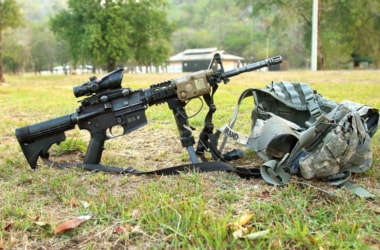 Turkey has signed a deal with Russia to buy S-400 missile defence systems, its first major weapons purchase from Moscow, in an accord that could trouble Ankara's NATO allies.
The purchase of the surface-to-air missile defence batteries, Ankara's most significant deal with a non-NATO supplier, comes with Turkey in the throes of a crisis in relations with several Western states
Moscow also confirmed the accord, with Vladimir Kozhin, Mr. Putin's adviser for military and technical cooperation, saying the contract has been signed and is being prepared for implementation
The purchase of the missile systems from a non-NATO supplier is likely to raise concerns in the West over their technical compatibility with the alliance's equipment.
Turkey - which has the second largest standing Army in NATO after the United States - was free to make military acquisitions based on its defence needs.
Moscow would extend a credit to Turkey for the purchase of the weapons.
However signing the deal does not mean that delivery is imminent, with Russia facing a high demand for the S-400s from its own armed forces and key clients like China and India.
Some analysts have suggested the message sent to the West by the military cooperation between Moscow and Ankara is as important as the delivery itself.
In 2015, Turkey scrapped a $3.4 billion deal with China to build its first anti-missile system.
Russia's relations with NATO have been in crisis over its annexation of Crimea from Ukraine and for backing pro-Moscow separatists in eastern Ukraine.
Turkey, a NATO member since 1952, has currently troubled ties with the United States over a number of issues including Washington's support for the People's Protection Units (YPG) Syrian Kurd militia which Ankara considers a terror group. Turkey has signed a deal with Russia to buy S-400 missile defence systems, its first major weapons purchase from Moscow, in an accord that could trouble Ankara's NATO allies.
The purchase of the surface-to-air missile defence batteries, Ankara's most significant deal with a non-NATO supplier, comes with Turkey in the throes of a crisis in relations with several Western states
Moscow also confirmed the accord, with Vladimir Kozhin, Mr. Putin's adviser for military and technical cooperation, saying the contract has been signed and is being prepared for implementation
The purchase of the missile systems from a non-NATO supplier is likely to raise concerns in the West over their technical compatibility with the alliance's equipment.
Turkey - which has the second largest standing Army in NATO after the United States - was free to make military acquisitions based on its defence needs.
Moscow would extend a credit to Turkey for the purchase of the weapons.
However signing the deal does not mean that delivery is imminent, with Russia facing a high demand for the S-400s from its own armed forces and key clients like China and India.
Some analysts have suggested the message sent to the West by the military cooperation between Moscow and Ankara is as important as the delivery itself.
In 2015, Turkey scrapped a $3.4 billion deal with China to build its first anti-missile system.
Russia's relations with NATO have been in crisis over its annexation of Crimea from Ukraine and for backing pro-Moscow separatists in eastern Ukraine.
Turkey, a NATO member since 1952, has currently troubled ties with the United States over a number of issues including Washington's support for the People's Protection Units (YPG) Syrian Kurd militia which Ankara considers a terror group.
|
▼ Navika Sagar Parikrama: Indian women set to circumnavigate globe! [09-12-17]
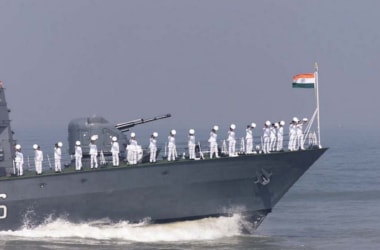 Union Defence Minister Nirmala Sitharaman on 10th Sept flagged off the all-women team of the ‘Navika Sagar Parikrama’ in Panaji, Goa.
The crew of the ‘Sagar Parikrama’ comprises of six-member all women team on board the sailing vessel INSV Tarini and will circumnavigate the globe in approximately 165 days.
This is the first-ever Indian circumnavigation of the globe by an all-women crew. Cdr Dilip Dhonde has trained the crew. He is the first sailor to circumnavigate.
Prime Minister Narendra Modi took to Twitter to congratulate and wish the team on their journey.
The team comprises of- Lt Cdr Vartika Joshi and Lt Payal Gupta from Uttarakhand, Lt Cdr Pratibha Jamwal from Himachal, Lt Cdr P Swathi from Andhra Pradesh, Lt Aishwarya Boddapati from Telangana and Lt Shourgrakpam Vijaya Devi hailing from Manipur. Union Defence Minister Nirmala Sitharaman on 10th Sept flagged off the all-women team of the ‘Navika Sagar Parikrama’ in Panaji, Goa.
The crew of the ‘Sagar Parikrama’ comprises of six-member all women team on board the sailing vessel INSV Tarini and will circumnavigate the globe in approximately 165 days.
This is the first-ever Indian circumnavigation of the globe by an all-women crew. Cdr Dilip Dhonde has trained the crew. He is the first sailor to circumnavigate.
Prime Minister Narendra Modi took to Twitter to congratulate and wish the team on their journey.
The team comprises of- Lt Cdr Vartika Joshi and Lt Payal Gupta from Uttarakhand, Lt Cdr Pratibha Jamwal from Himachal, Lt Cdr P Swathi from Andhra Pradesh, Lt Aishwarya Boddapati from Telangana and Lt Shourgrakpam Vijaya Devi hailing from Manipur.
- Vartika Joshi has rich sailing experience and has led INSV Mhadei as well as INSV Tarini.
- Pratibha Jamwal has sailed from Goa to Port Blair, Goa to Mauritius and Goa to Cape Town.
- P Swathi who sailed onboard INSV Mhadei also took part in the recent Cape to Rio race.
- Aishwarya Boddapati has sailed onboard INSV Tarini and Mhadei in 2017 and 2016 respectively.
- Vijaya Devi has sailed extensively from 2014 onwards.
- Payal Gupta has distinguished herself as a sailor.
|
▼ US$91 million funeral for Thai King Adulyadej! [09-11-17]
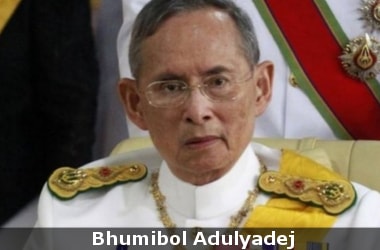 The Kingdom of Thailand will begin the five-day royal cremation ceremony next month for King Bhumibol Adulyadej.
The Thai king's reign lasted seven decades.
The country’s military government has budgeted 3 billion-baht ($91 million) for the funeral.
The cremation itself is scheduled for October 26.
Thais believe the deceased monarch will ascend to heaven.
An ornate palanquin is being prepared for the royal funeral.
Bhumibol died on October 13, 2016 at age 88. The monarch, who took the throne in 1946, had come to symbolise continuity.
During his reign, the country had more than two dozen prime ministers and 10 military coups.
Bhumibol Adulyadej: Know More The Kingdom of Thailand will begin the five-day royal cremation ceremony next month for King Bhumibol Adulyadej.
The Thai king's reign lasted seven decades.
The country’s military government has budgeted 3 billion-baht ($91 million) for the funeral.
The cremation itself is scheduled for October 26.
Thais believe the deceased monarch will ascend to heaven.
An ornate palanquin is being prepared for the royal funeral.
Bhumibol died on October 13, 2016 at age 88. The monarch, who took the throne in 1946, had come to symbolise continuity.
During his reign, the country had more than two dozen prime ministers and 10 military coups.
Bhumibol Adulyadej: Know More
- Bhumibol was born December 5, 1927, in Cambridge, Massachusetts, where his father, Prince Mahidol, was studying medicine at Harvard University.
- Bhumibol was survived by his wife, Queen Sirikit.
- His only son, Maha Vajiralongkorn, succeeded to the throne.
- His coronation will be held after the cremation.
- Bhumibol was the world's longest-reigning monarch at the time of his death.
- He was the ninth king in the two-century-old Chakri Dynasty, one of the world's wealthiest monarchies.
- On October 29, the final day of the cremation process, Bhumibol's ashes will be enshrined at two temples in the Thai capital: Wat Ratchabophit and Wat Bovoranives.
- A ceremonial royal urn will be moved to the crematorium at 7 am on October 26, the second day. The cremation will take place at 10 pm.
- The restored golden chariot will carry the royal run to the 40-storey high crematorium built at Sanam Luang.
- The royal family and foreign dignitaries will watch proceedings from a pavilion built next to the crematorium.
- The ornate pavilion can house 2,400 people.
|
▼ Nag ATGM can fire at targets 7 kms away! [09-11-17]
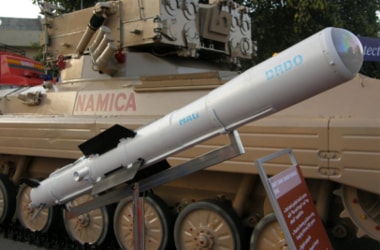 Another home made missile has completed a successful test.
This time it's the Nag anti-tank missile.
India's indigenously developed third generation anti-tank guided missile (ATGM) Nag has been successfully flight tested by premier defence research organisation DRDO in deserts of Rajasthan, marking completion of development trials.
The missile can hit a target up to seven km.
India has been trying to ramp up its military capability in sync changing security dynamics in the
The flight tests and the trials in June marked the successful completion of development trials of Nag missile.
With these two successful flight trials, and the flight test conducted earlier in June in the peak of summer, the complete functionality of Nag ATGM along with launcher system NAMICA has been established and marked the successful completion of development trials of Nag missile. Another home made missile has completed a successful test.
This time it's the Nag anti-tank missile.
India's indigenously developed third generation anti-tank guided missile (ATGM) Nag has been successfully flight tested by premier defence research organisation DRDO in deserts of Rajasthan, marking completion of development trials.
The missile can hit a target up to seven km.
India has been trying to ramp up its military capability in sync changing security dynamics in the
The flight tests and the trials in June marked the successful completion of development trials of Nag missile.
With these two successful flight trials, and the flight test conducted earlier in June in the peak of summer, the complete functionality of Nag ATGM along with launcher system NAMICA has been established and marked the successful completion of development trials of Nag missile.
|
▼ Indian women jawans in CMP now! [09-11-17]
 The government has decided to recruit women jawans into the Army’s Corps of Military Police (CMP) for investigating gender specific crimes.
However, induction of women into the Army’s combat arms could still be a long way as the CMP is only a support arm.
Putting women jawans in combat roles will be a lunge forward for the Army, known for being male-dominated.
But is also a step that the male jawans may not be mentally prepared for, according to women officers.
Secondly, for women to progress on to roles of higher responsibility and hence equality, there need to be operational changes in the way the Army looks at its lady officers and at the same time bring out a mentality change.
The Army has four such combat arms - infantry, mechanised infantry, armour and artillery.
But women officers or jawans, being placed in physical combat situations in the army could still be a remote possibility. The government has decided to recruit women jawans into the Army’s Corps of Military Police (CMP) for investigating gender specific crimes.
However, induction of women into the Army’s combat arms could still be a long way as the CMP is only a support arm.
Putting women jawans in combat roles will be a lunge forward for the Army, known for being male-dominated.
But is also a step that the male jawans may not be mentally prepared for, according to women officers.
Secondly, for women to progress on to roles of higher responsibility and hence equality, there need to be operational changes in the way the Army looks at its lady officers and at the same time bring out a mentality change.
The Army has four such combat arms - infantry, mechanised infantry, armour and artillery.
But women officers or jawans, being placed in physical combat situations in the army could still be a remote possibility.
|
▼ App Annie: Indians are ‘Appening! [09-8-17]
 The most active smartphone users in India spend more than 4 hours every day - the equivalent of half a standard workday - on mobile apps.
India was among the top 5 markets in terms of total time spent on apps on Android phones in May 2017, according to a study by app analytics firm App Annie.
India's top 20% (the most active Android users) was close behind the top 20% in South Korea, Mexico, Brazil, and Japan, whose users spent about 5 hours.
Even the least active users in India spent at least 1.5 hours. The median (those in the middle) spent close to 2.5 hours a day.
This indicates strong adoption of apps even for the least avid users in these countries, thanks to widespread adoption of apps such as WhatsApp and an emerging mobile-first lifestyle.
App Annie looked at the ten biggest Android using countries for its study.
In terms of categories, shopping apps, travel, and games emerged as the top categories where people were spending most of their time.
Indians were second in terms of average time spent per month per user on mobile shopping, with close to 90 minutes.
South Korea was just ahead with more than 90 minutes.
For finance apps, a user on an average spent 30 minutes per month in India, behind Brazil (45 minutes) and South Korea (60 minutes).
The rest of the users, including the ones in well-established markets like the US, UK, and France were spending less than 20 minutes. The most active smartphone users in India spend more than 4 hours every day - the equivalent of half a standard workday - on mobile apps.
India was among the top 5 markets in terms of total time spent on apps on Android phones in May 2017, according to a study by app analytics firm App Annie.
India's top 20% (the most active Android users) was close behind the top 20% in South Korea, Mexico, Brazil, and Japan, whose users spent about 5 hours.
Even the least active users in India spent at least 1.5 hours. The median (those in the middle) spent close to 2.5 hours a day.
This indicates strong adoption of apps even for the least avid users in these countries, thanks to widespread adoption of apps such as WhatsApp and an emerging mobile-first lifestyle.
App Annie looked at the ten biggest Android using countries for its study.
In terms of categories, shopping apps, travel, and games emerged as the top categories where people were spending most of their time.
Indians were second in terms of average time spent per month per user on mobile shopping, with close to 90 minutes.
South Korea was just ahead with more than 90 minutes.
For finance apps, a user on an average spent 30 minutes per month in India, behind Brazil (45 minutes) and South Korea (60 minutes).
The rest of the users, including the ones in well-established markets like the US, UK, and France were spending less than 20 minutes.
|
▼ 7th edition of Vigilance Manual launched [09-8-17]
The Union Minister of State (Independent Charge) of the Ministry of Development of North Eastern Region (DoNER), MoS PMO, Personnel, Public Grievances & Pensions, Atomic Energy and Space, Dr Jitendra Singh released the 7th edition of the Vigilance Manual of Central Vigilance Commission (CVC) on Sept 7, 2017.
The edition released today is the 7th edition of the Vigilance Manual.
The 1st edition was released in 1968, 2nd edition of the Manual was released in 1971, 3rd edition in 1974, 4th edition in 1982, 5th edition in 1991.
The last edition of the Vigilance Manual was released in the year 2005 and a need was felt to undertake a comprehensive review of the existing Vigilance Manual.
The present edition of the Vigilance Manual is a public document accessible through CVC’s website www.cvc.nic.in. The online version has been released along with the printed version for the first time.
The 2017 edition of the Vigilance Manual incorporates 567 Paras divided into 11 Chapters with appropriate citations. Eleven chapters include: Vigilance Administration, Appointment, Role, Functions & Responsibilities of Chief Vigilance Officers, Complaints, PIDPI complaint, Preliminary Enquiry, CBI, Disciplinary Proceeding and Suspension, Vigilance Management in PSB & PSIC, CTEO, Preventive Vigilance and some relevant issues.
It has been made a complete document by hyperlinking orders/circulars cited in the Manual (in the online version).
This Manual will be a reference for almost all aspects of vigilance administration.
The Central Vigilance Commission will constantly update it based on the suggestions received from all stakeholders.
Previous Modifications/amendments were carried out through Circulars, Guidelines, Instructions etc. issued by the Central Vigilance Commission / DoPT / MHA etc.
These changes have been incorporated in the Manual so as to make it comprehensive and user friendly.
|
▼ Yudh Abhyas: One of the largest Indo-US Defence exercises [09-8-17]
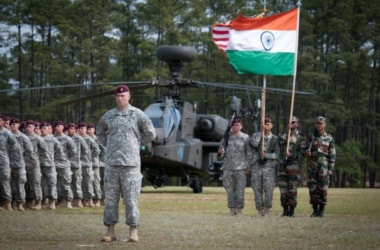 As part of the ongoing Indo-US defence cooperation, a joint military training, Exercise Yudh Abhyas - 2017 is being conducted at Joint Base Lewis McChord, Washington, USA from 14 to 27 September 17.
Exercise Yudh Abhyas is one of the largest joint running military training and defence corporation endeavours between India and USA.
This will be the 13th edition of the joint exercise hosted alternately between the two countries.
Yudh Abhyas: Know More As part of the ongoing Indo-US defence cooperation, a joint military training, Exercise Yudh Abhyas - 2017 is being conducted at Joint Base Lewis McChord, Washington, USA from 14 to 27 September 17.
Exercise Yudh Abhyas is one of the largest joint running military training and defence corporation endeavours between India and USA.
This will be the 13th edition of the joint exercise hosted alternately between the two countries.
Yudh Abhyas: Know More
- Exercise Yudh Abhyas will provide an opportunity to the armed forces of both countries to train in an integrated manner at Battalion level with joint planning at Brigade level.
- Multiple scenarios will be rehearsed during the joint exercise with a view to understand each-other’s organisational structure and battle procedures which would result in a higher degree of jointmanship that would further facilitate interoperability between the armed forces of both countries to meet any unforeseen contingency across the globe.
- The exercise is also an ideal platform to learn from each-other’s experiences of planning and execution of operations.
- Both armies will jointly train, plan and execute a series of well-developed operations for neutralisation of threats of varied nature.
- In the end a joint exercise will be undertaken by both countries in an operational setting under a UN mandate.
- Experts from both sides will also hold expert academic and military discussions to share each other’s experiences on varied topics for mutual benefit.
|
▼ An island disappears! [09-8-17]
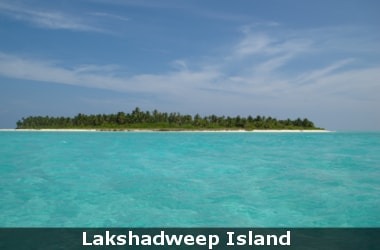 One of the biodiversity-rich uninhabited islands part of Lakshadweep has vanished due to coastal erosion and another four such territories in the sea are shrinking fast, claims a new study.
Parali I island, part of Bangaram atoll, which was 0.032 km2 in 1968 has been eroded to an extent of 100 per cent, resulting in its inundation, says R M Hidayathulla in his research work.
Hidayathulla, carried out studies on assessment of the biodiversity confining to five uninhabited islands - Bangaram, Thinnakara, Parali I, II and III, of which Parali I has been inundated - of Bangaram atoll in Lakshadweep, an archipelago of 36 islands in the Lakshadweep sea.
The study said the complete erosion and inundation of Parali I was pointing to the gravity of issues associated with coastal erosion within the atoll.
On an overall assessment of the changes in the aerial extent of islands using RS/GIS, it has been noticed that all the five islets of Bangaram atoll had undergone coastal erosion, it said.
The data obtained were processed using Remote Sensing (RS) and Geographic Information System (GIS) softwares, Harilal said.
One island has submerged. We can say Lakshadweep now is not an archipelago of 36 islands.
The assessment of the extent of geo-morphological changes associated with each island for a period of 45 years was carried out using geospatial techniques.
Since the absence of this island (Parli I) is noticed in both observations carried out in 2003 and 2007, it is assumed that the island has been subjected to complete erosion during 1968-2003 periods and an assessment of the exact year of its inundation requires data analysis for a span of 35 years extending from 1968.
The magnitude of such events was higher in Parali group, evidenced by the complete erosion and inundation of the island Parali I, the study said.
It is now widely recognised that islands and coastal areas are going to get eroded and inundated due to rising sea levels because of increasing global temperature.
India’s coasts and islands, which are densely populated, are highly vulnerable.
The magnitude of net erosion was higher in Parali I island (100 per cent), which resulted in its inundation.
Apart from Parali I, net erosion was higher in Parali II (80 per cent), followed by Thinnakara (14.38 per cent), Parali III (11.42 per cent) and Bangaram (9.968 per cent), the study said. One of the biodiversity-rich uninhabited islands part of Lakshadweep has vanished due to coastal erosion and another four such territories in the sea are shrinking fast, claims a new study.
Parali I island, part of Bangaram atoll, which was 0.032 km2 in 1968 has been eroded to an extent of 100 per cent, resulting in its inundation, says R M Hidayathulla in his research work.
Hidayathulla, carried out studies on assessment of the biodiversity confining to five uninhabited islands - Bangaram, Thinnakara, Parali I, II and III, of which Parali I has been inundated - of Bangaram atoll in Lakshadweep, an archipelago of 36 islands in the Lakshadweep sea.
The study said the complete erosion and inundation of Parali I was pointing to the gravity of issues associated with coastal erosion within the atoll.
On an overall assessment of the changes in the aerial extent of islands using RS/GIS, it has been noticed that all the five islets of Bangaram atoll had undergone coastal erosion, it said.
The data obtained were processed using Remote Sensing (RS) and Geographic Information System (GIS) softwares, Harilal said.
One island has submerged. We can say Lakshadweep now is not an archipelago of 36 islands.
The assessment of the extent of geo-morphological changes associated with each island for a period of 45 years was carried out using geospatial techniques.
Since the absence of this island (Parli I) is noticed in both observations carried out in 2003 and 2007, it is assumed that the island has been subjected to complete erosion during 1968-2003 periods and an assessment of the exact year of its inundation requires data analysis for a span of 35 years extending from 1968.
The magnitude of such events was higher in Parali group, evidenced by the complete erosion and inundation of the island Parali I, the study said.
It is now widely recognised that islands and coastal areas are going to get eroded and inundated due to rising sea levels because of increasing global temperature.
India’s coasts and islands, which are densely populated, are highly vulnerable.
The magnitude of net erosion was higher in Parali I island (100 per cent), which resulted in its inundation.
Apart from Parali I, net erosion was higher in Parali II (80 per cent), followed by Thinnakara (14.38 per cent), Parali III (11.42 per cent) and Bangaram (9.968 per cent), the study said.
|
▼ From Vijaywada to Amravati in 5 minutes? Try Hyperloop! [09-8-17]
 The Los Angeles-based Hyperloop Transportation Technologies (HTT) has signed a Memorandum of Understanding (MoU) with the Andhra Pradesh government to develop a ' super fast' short-distance transport facility between Vijayawada and the state's upcoming capital, Amaravati.
The project will employ HTT's patented technology to bring down travel time to less than 5 minutes.
During the initial phase of the project, HTT will conduct a six-month long feasibility study from October.
The firm will subsequently introduce its Hyperloop Transportation System for the first time in India as the project enters Phase 2.
According to the state government, the project would take off from Amravati.
HTT is among the few companies to offer the Hyperloop Transportation System that is based on magnetic levitation. Other than HTT, Tesla and the Elon Musk-owned Boring Company are actively involved in providing similar solutions.
While the Hyperloop technology was conceived to shorten travel time between locations that are far from each other, the state government has decided to use the technology for short distances at the initial stage.
The company will be partnering with the state government to build regulatory standards necessary for the safe and efficient operation of the technology in India. For this, HTT plans to take inputs from various local stakeholders as well.
HTT: Know More The Los Angeles-based Hyperloop Transportation Technologies (HTT) has signed a Memorandum of Understanding (MoU) with the Andhra Pradesh government to develop a ' super fast' short-distance transport facility between Vijayawada and the state's upcoming capital, Amaravati.
The project will employ HTT's patented technology to bring down travel time to less than 5 minutes.
During the initial phase of the project, HTT will conduct a six-month long feasibility study from October.
The firm will subsequently introduce its Hyperloop Transportation System for the first time in India as the project enters Phase 2.
According to the state government, the project would take off from Amravati.
HTT is among the few companies to offer the Hyperloop Transportation System that is based on magnetic levitation. Other than HTT, Tesla and the Elon Musk-owned Boring Company are actively involved in providing similar solutions.
While the Hyperloop technology was conceived to shorten travel time between locations that are far from each other, the state government has decided to use the technology for short distances at the initial stage.
The company will be partnering with the state government to build regulatory standards necessary for the safe and efficient operation of the technology in India. For this, HTT plans to take inputs from various local stakeholders as well.
HTT: Know More
- HTT was co-founded by CEO Dirk Ahlbom and chairman Gesta in 2013.
- It has a large design and execution team consisting of more than 800 engineers.
- It is also drawing support from 40 other corporate and university partners.
|
▼ BRICS Cooperation Mechanism [09-5-17]
 Five banks of the Brics Bank Cooperation Mechanism have agreed to establish credit lines in the national currencies and cooperate on credit ratings.
The agreement was signed ahead of the Brics (Brazil, Russia, India, China and South Africa) summit in China’s Xiamen city on Sept 2, 2017 in which leaders of the five countries, including Prime Minister Narendra Modi are scheduled to take part.
Brazilian Development Bank (BNDES), Vnesheconombank, Export-Import Bank of India, China Development Bank and Development Bank of South Africa (DBSA) have signed an agreement to establish credit lines in the national currencies, as well as a memorandum of cooperation on credit ratings.
Ahead of the Brics summit, the New Development Bank (NDB) of the five nations has approved $1.4 billion loans for sustainable development projects in China, India and Russia.
The Board of Directors of the bank have approved four infrastructure and sustainable development projects in the three countries, the NDB had said.
For India, the bank has approved $470 million loan for Madhya Pradesh’s Multi-Village Rural Drinking Water Supply Scheme Project. Five banks of the Brics Bank Cooperation Mechanism have agreed to establish credit lines in the national currencies and cooperate on credit ratings.
The agreement was signed ahead of the Brics (Brazil, Russia, India, China and South Africa) summit in China’s Xiamen city on Sept 2, 2017 in which leaders of the five countries, including Prime Minister Narendra Modi are scheduled to take part.
Brazilian Development Bank (BNDES), Vnesheconombank, Export-Import Bank of India, China Development Bank and Development Bank of South Africa (DBSA) have signed an agreement to establish credit lines in the national currencies, as well as a memorandum of cooperation on credit ratings.
Ahead of the Brics summit, the New Development Bank (NDB) of the five nations has approved $1.4 billion loans for sustainable development projects in China, India and Russia.
The Board of Directors of the bank have approved four infrastructure and sustainable development projects in the three countries, the NDB had said.
For India, the bank has approved $470 million loan for Madhya Pradesh’s Multi-Village Rural Drinking Water Supply Scheme Project.
|
▼ Xiamen declaration: First BRICS declaration to name terror groups [09-5-17]
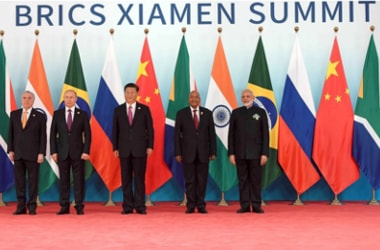 In a significant move forward from the Goa BRICS declaration, Beijing has signed off on New Delhi’s initiative to name two Pakistan-based terrorist groups, Lashkar-e-Taiba and Jaish-e-Mohammad, in the Xiamen declaration. In a significant move forward from the Goa BRICS declaration, Beijing has signed off on New Delhi’s initiative to name two Pakistan-based terrorist groups, Lashkar-e-Taiba and Jaish-e-Mohammad, in the Xiamen declaration.
China has been expressing “concern” on the security situation in the region and violence caused by these outfits.
This is the first time that a BRICS declaration has named these terrorist groups, although the Heart of Asia declaration in Amritsar, a grouping which includes China and Pakistan, also named them in December 2016.
But there has been no visible change in China’s policy on the ground so far.
Along with the Haqqani network, Taliban and Islamic State, the Xiamen declaration also named the Eastern Turkistan Islamic Movement, a Muslim separatist group founded by militant Uighurs, members of the Turkic-speaking ethnic group in northwest China’s Xinjiang province.
The Xiamen declaration also deplored all terrorist attacks worldwide, including attacks in BRICS countries, and condemned terrorism in all its forms and manifestations wherever committed, by whomsoever.
It underlined that there could be no justification whatsoever for any act of terrorism.
|
▼ North Korea conducts 6th nuclear test [09-4-17]
 South Korea’s military on Sept 3rd, 2017 said that North Korea is believed to have conducted its sixth nuclear test after it detected a strong earthquake. South Korea’s military on Sept 3rd, 2017 said that North Korea is believed to have conducted its sixth nuclear test after it detected a strong earthquake.
South Korea’s weather agency and the Joint Chief of Staff said an artificial 5.6 magnitude quake occurred at 12:29 p.m. local time, in Kilju, northern Hamgyong Province.
The US Geological Survey called the first quake an explosion with a magnitude 6.3.
North Korea conducted its fifth test last year in September.
If confirmed, the latest test would mark yet another big step forward in North Korean attempts to obtain a nuclear-armed missile capable of reaching deep into the US mainland.
North Korea conducted two nuclear tests last year and has since maintained a torrid pace in weapons tests, including flight-testing developmental intercontinental ballistic missiles and flying a powerful midrange missile over Japan.
North Korea in July conducted its first ever ICBM tests, part of a stunning jump in progress for the country’s nuclear and missile program since Kim rose to power following his father’s death in late 2011.
The country followed its two tests of Hwasong-14 ICBMs, which, when perfected, could target large parts of the United States, by threatening to launch a salvo of its Hwasong-12 intermediate range missiles toward the US Pacific island territory of Guam in August.
|
▼ Reforms within Indian army to enhance combat capability [09-1-17]
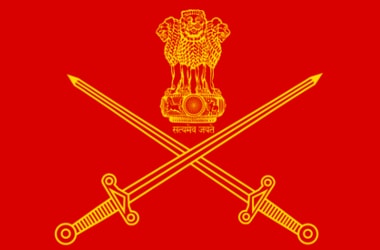 In a first, the government on 30th Aug, 2017 approved reforms within the Indian Army. In a first, the government on 30th Aug, 2017 approved reforms within the Indian Army.
This is to enhance the combat capability of the forces thereby rebalancing defence expenditure in a phased manner by December 2019 based on the Lt Gen Shekatkar committee.
The first phase of the reforms involves redeployment and restructuring of approximately 57,000 posts of officers.
The measures will be implemented in a gradual manner.
Restructuring of the Indian Army is aimed at enhancing combat capability in a manner that the officers will be used for improving operational preparedness and civilians will be redeployed in different wings of the armed forces for improving efficiency.
The committee headed by Lt Gen (Retd) DB Shekatkar had given 99 recommendations to the government in its report on December 2016.
Out of this the Ministry of Defence has decided to implement 65 suggestions.
The net effect of this is, as to various, different functions in the Army, as per the changed environment of technology, economy, combat capability of the Army, how it is to be best utilised.
Under this, the government will do away 39 military farms and several Army postal departments in peace locations.
Army Reforms: Know More
- There will be optimisation of signal establishments to include Radio Monitoring Companies, Corps Air Support Signal Regiments, Air Formation Signal Regiments, Composite Signal Regiments and merger of Corps Operating and Engineering Signal Regiments.
- The committee was given the mandate to recommend measures for enhancing the Combat Capability and Rebalancing Defence Expenditure of the Armed Forces with an aim to increase "teeth to tail ratio.
|